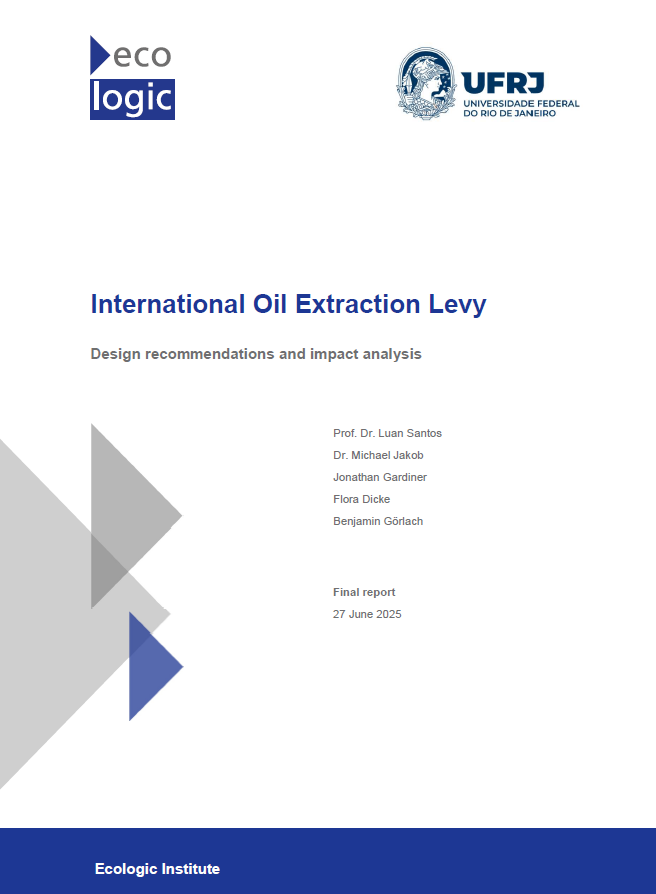International Oil Extraction Levy
Design recommendations and impact analysis
- Publication
- Citation
Santos, L., Jakob, M., Gardiner, J., Dicke, F., & Görlach, B. (2025). International oil extraction levy: Design recommendations and impact analysis. Ecologic Institute.
This report explores the design and implications of an international oil extraction levy as a mechanism to mobilize new sources of climate finance. The assessed levy places a price on the embedded CO₂ in extracted crude oil, increasing production costs and likely raising oil prices for final consumers. By internalising part of the climate costs of fossil fuels, the mechanism aligns with the polluter pays principle.
Our analysis shows that such a levy holds considerable revenue potential. Under the central scenario (S2), where a small group of high-income countries participate and levy rates increase incrementally (starting at $5/tCO2 increasing by $5 per year), annual revenues could reach $85 billion by 2035. This amount represents 28% of the $300 billion climate finance target set at COP29 in Baku. More ambitious scenarios – with full participation and steeper price trajectories – could yield up to $571 billion annually. These estimates illustrate the significant financial potential of introducing an oil extraction levy at the global level.
However, the levy would raise the world market price of oil, passing additional costs onto consumers, even though household impacts are expected to be relatively modest. Targeted compensation schemes for vulnerable households are essential to improve acceptability of the policy. Given that an oil extraction levy represents a voluntary mechanism where countries must opt in, political feasibility is the most significant barrier. Tax sovereignty and difficulties integrating new levies into national legal systems represent further barriers. Overcoming these will require not just technical design, but deep political strategy, international cooperation, and sustained policy innovation.




